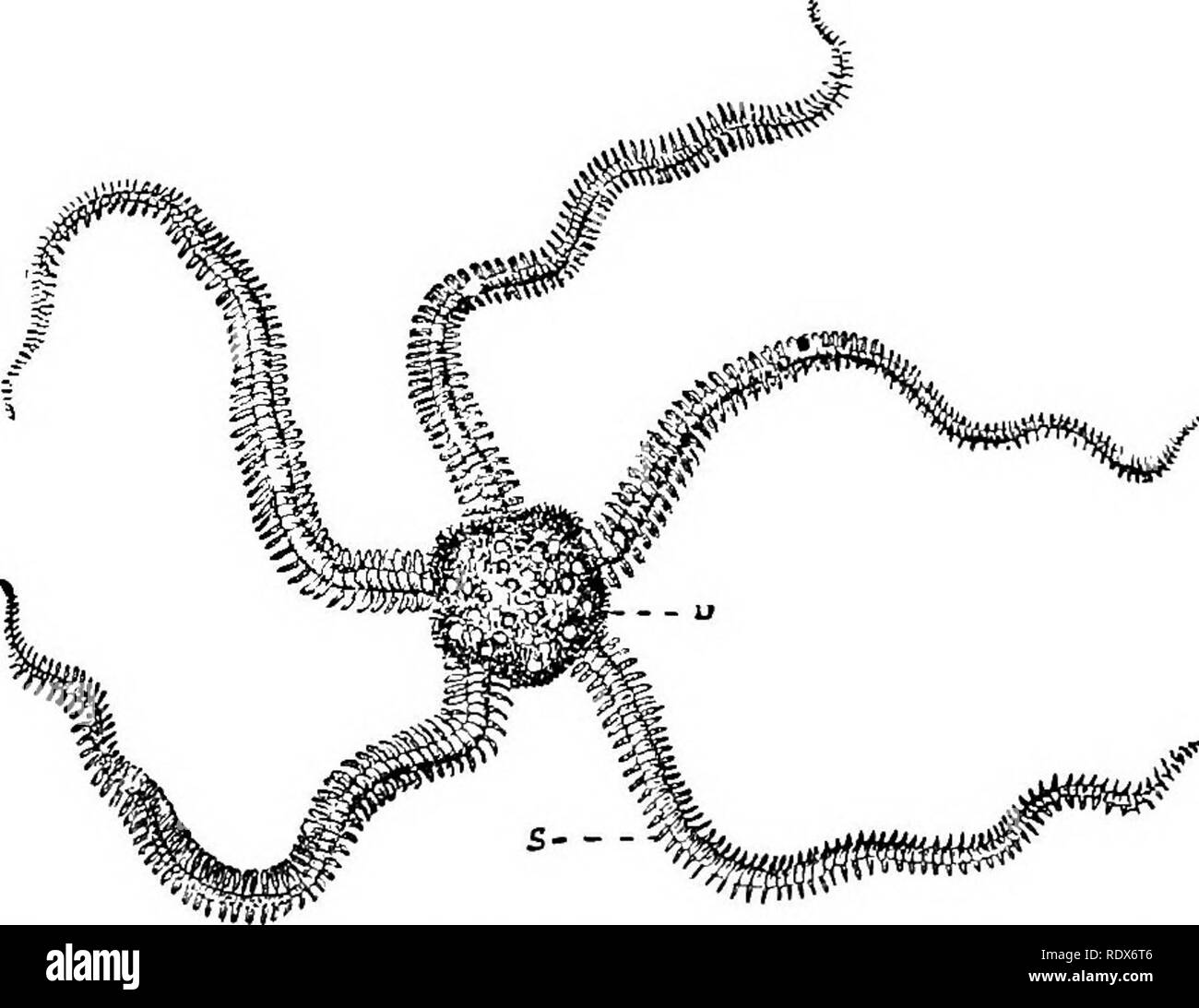. Natural history. Zoology. STAR-FISH. 657 curious kinds of spines with branched heads, known as paxillae (Px). Between the plates there pass out thin-walled processes (Rsp), which serve for respiration by bringing the fluid of the body-cavity into the proximity of the outer water. Besides the paxillae, there occur on the outer surface of a star-fish, as well as on that of a sea-urchin, small pincer-like organs called pedicellariae. These resemble little pincers supported at the end of a movable stalk, and they have probably been evolved from the smaller spines that cover the teat of these ani

Image details
Contributor:
The Book Worm / Alamy Stock PhotoImage ID:
RDX6T6File size:
7.2 MB (237.2 KB Compressed download)Releases:
Model - no | Property - noDo I need a release?Dimensions:
1800 x 1389 px | 30.5 x 23.5 cm | 12 x 9.3 inches | 150dpiMore information:
This image is a public domain image, which means either that copyright has expired in the image or the copyright holder has waived their copyright. Alamy charges you a fee for access to the high resolution copy of the image.
This image could have imperfections as it’s either historical or reportage.
. Natural history. Zoology. STAR-FISH. 657 curious kinds of spines with branched heads, known as paxillae (Px). Between the plates there pass out thin-walled processes (Rsp), which serve for respiration by bringing the fluid of the body-cavity into the proximity of the outer water. Besides the paxillae, there occur on the outer surface of a star-fish, as well as on that of a sea-urchin, small pincer-like organs called pedicellariae. These resemble little pincers supported at the end of a movable stalk, and they have probably been evolved from the smaller spines that cover the teat of these animals. They move with extreme rapidity, and catch hold of any minute object that is brought into contact with their inner surfaces. They are variously supposed to hold small particles of food, to clean the test of dirt, and to catch hold of fronds of sea-weed for the steady- ing of the animal ; while the fact that in the sea-urchin they are sometimes provided with poison-glands seems to show that they serve also as weapons of ofience. At the extremity of each arm is a single tube-foot, with no. FiQ. 5.—A Bhittle-stah (^OphiopTiolis aculeata). Two-thirds natural size. sucker at the end : this is always stretched straight out, and is known as the unpaired tentacle. Immediately above it is a small eye coloured with red pigment, and protected by small tentacles. Star-fish are sluggish animals, rarely moving of themselves, and staying for days in the same position. They can, however, travel at a fair pace when disturbed. When turned over on their backs, they are able to right them- selves, but some of them, which have very stiff skeletons, take much longer over the process than those that are able to twist their arms about in acrobat fashion. They are, like most echinodernis, a sociable class, living usually in swarms. Some species of shallow-water forms have been observed to pair during the breeding season. They are voracious animals, eating all kinds of food, and taking plenty at